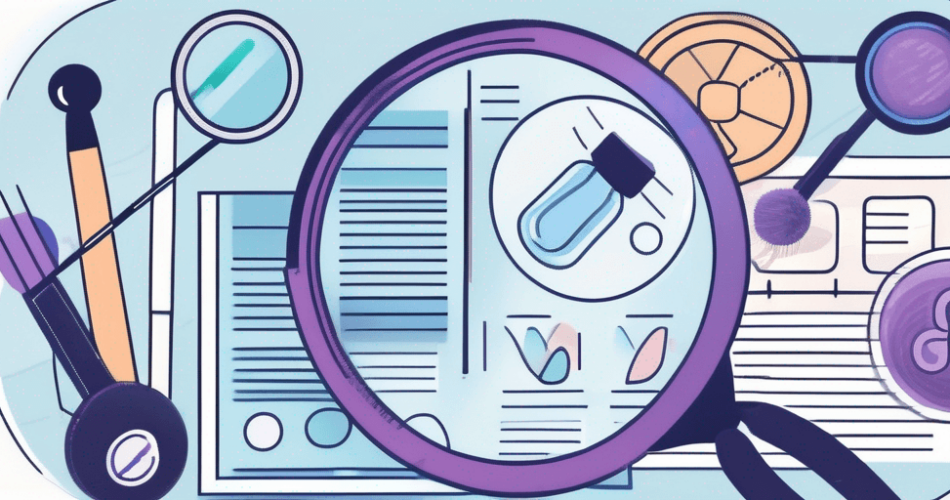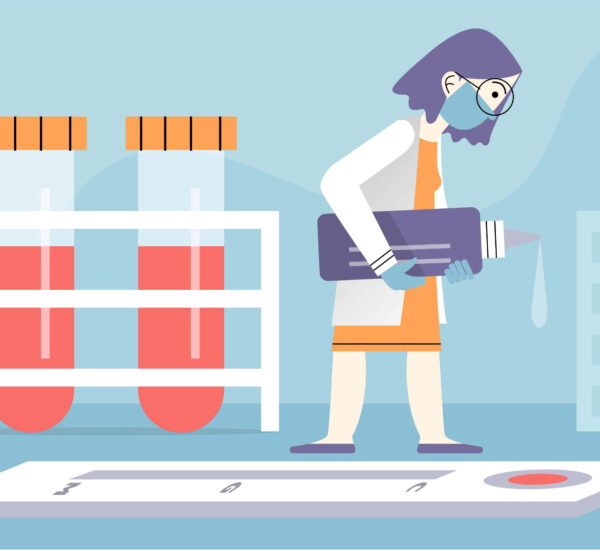In today’s modern era, HIV testing has become an integral part of healthcare, allowing individuals to gain insight into their health. At the same time, it will enable them to take necessary actions early with the help of self-testing kits for HIV. However, understanding HIV test results can sometimes be a daunting task.
Find out how to interpret the HIV test results with this guide. Let’s begin!
What is HIV
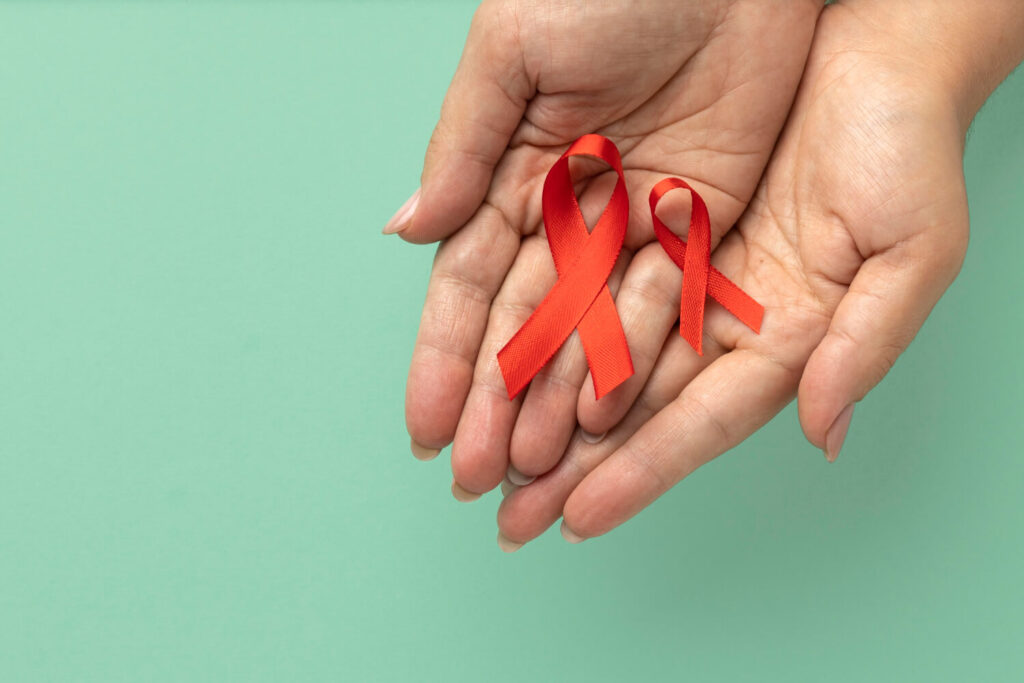
Before delving into the specifics of interpreting test results, it is vital to understand what HIV is and why it is considered a global threat. HIV, or human immunodeficiency virus, is a condition that attacks the immune system. If it continues, various conditions can occur and affect the well-being of patients. In that case, it is vital to detect the condition early on to ensure early treatment against HIV.
The Importance of HIV Testing
Secure Sexual Health
Undergoing an HIV screening like HIV testing is crucial for individuals with sexual contact. Getting tested allows people to take charge of your sexual health and ensures early detection and access to appropriate medical care if necessary.
Moreover, this knowledge empowers individuals to make informed decisions about their sexual practices, reducing the risk of spreading the virus to their sexual partners. It is common to transmit HIV through body fluids like semen, vaginal fluids, etc. In short, possible HIV exposure can happen through unprotected sex.
Protect Public Health
Furthermore, let’s take a moment to explore the broader impact of HIV testing. Beyond individual health, HIV testing plays a significant role in public health as well. When people know their HIV status, they can take necessary precautions to prevent transmission to others. Thus, ensuring disease control.
Additionally, widespread testing helps identify areas with higher infection rates, allowing public health authorities to allocate resources effectively and implement targeted prevention strategies.
Different Types of HIV Tests
When it comes to HIV testing, it is essential to note that each of them may have some edge over the others. For instance, some of them may provide higher accuracy of HIV test results as they detect signs of the virus. Meanwhile, some of them may be easier to use or even have faster production of the HIV test results.
No matter what the case is, it is vital to understand their difference to know which to use. Let’s differentiate them below!
Antibody Test
This type of HIV test detects the presence of HIV antibodies in your body’s immune system as a response to the virus. It is widely accessible and provides reliable results. However, it’s important to note that they may not detect the virus during the early stages of infection as there are not enough antibodies yet.
Antigen Test
Antigen tests identify specific HIV proteins, known as p24 antigens. These are present in the blood sample during the early stages of infection. This test can detect HIV earlier than antibody tests, but they may have a higher rate of false positives.
Combination Test
Also known as fourth-generation tests, these combine both antibody and antigen testing, offering a more accurate diagnosis. They are used in detecting recent infections.
Nucleic Acid Test (NAT)
It is a lab test that directly detects the genetic material of the virus. This test can provide highly accurate results, especially during the early stages of infection. Oftentimes, it is used for confirmatory testing and in situations where early detection is crucial, such as in newborns born to HIV-positive mothers.
Decoding HIV Test Results
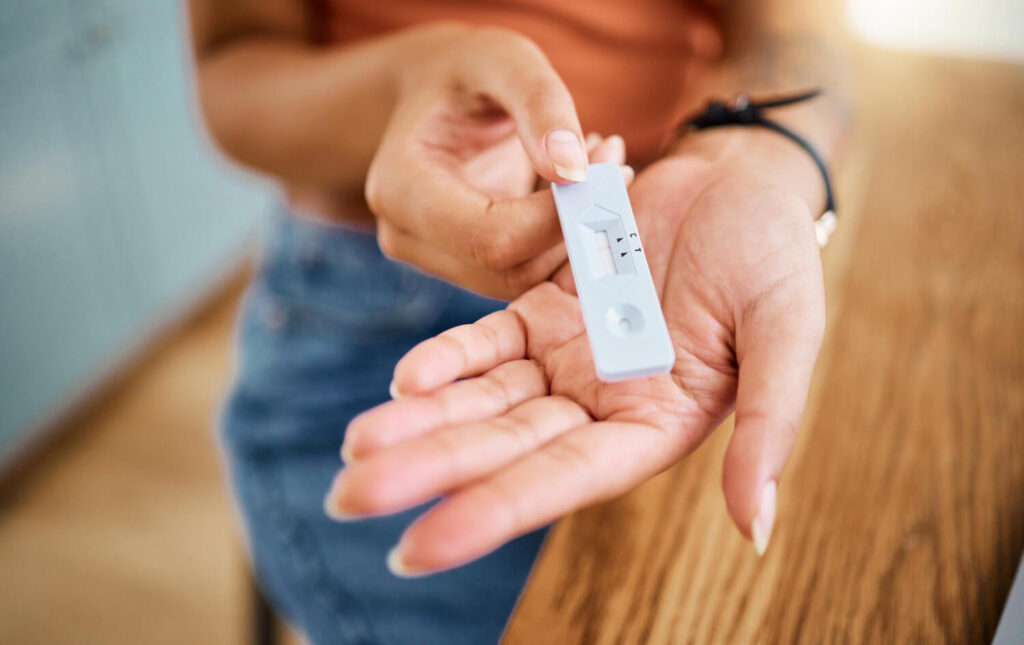
When undergoing an HIV test result, it is important to know how to interpret them. There are cases where a series of factors influence the test result, which leads to the positive, negative, or inconclusive HIV test result. However, what do they mean when these results appear?
In comparison with laboratory tests, there are several data included which the health doctor interprets for the patients. However, for a self-test HIV test for home testing, individuals can interpret the results themselves using the instructions included in the kit.
Let’s discover some of these data to learn how to interpret one’s HIV test result.
Negative HIV Test Results
Commonly, a self-test for HIV indicates a person to be HIV-negative through the appearance of bands on the HIV test. The test kit will have instructions to help individuals identify the presence of antibodies in the test. For instance, the appearance of 1 band or 1 line beside the Control (C) area of the kit indicates no presence of antibodies. In short, the HIV test result is negative.
However, certain cases may also involve not detecting very recent infections. The accuracy of the results depends on the test conducted and the window period associated with it. For example, the window period for a fourth-generation HIV test is typically around 2-4 weeks, whereas for an antibody test, it can be up to 3 months.
So, if the HIV test is conducted within the window period, the HIV test result will be negative, or known as false negative. When that happens, it is important to take a second test after the window period to determine a more accurate test result. Therefore, it’s vital to consider the timing of the test concerning possible exposure. Thus, ensuring better HIV test results.
Positive HIV Test Results
Meanwhile, another HIV test result that people can encounter and want to avoid is a positive result. When a self-test kit for HIV indicates the presence of antibodies, 2 bands or 2 lines appear beside Control (C) and Test (T) of the test kit. There can also be instances where faint lines can occur, which can still indicate HIV-positive.
Like the negative test result, there can also be an instance where false positives can happen. Some scenarios like the presence of antibodies not related to HIV can be detected by the HIV test. Thus, showing a positive HIV test result. If such HIV test results occur, it is important to seek immediate help.
Whether positive or false positive, individuals must still visit a doctor for a better assessment of their condition. A positive test result still means that there’s a presence of antibodies, which are related to the immune system. By visiting a health expert, the patient can receive early medical intervention and access to appropriate care and HIV treatment.
Inconclusive HIV Test Results
Lastly, individuals can also encounter inconclusive HIV test results. The self-test kit will show no band or lines in the test kit, or 1 band or 1 line beside the Test (T) of the test kit. This test result can happen due to several reasons.
These may include:
- not using the kit properly
- technical issues during testing
- presence of other medical conditions that may affect the accuracy of the test
- test kit is used during the early stages of HIV infection
In such cases, further testing is necessary to ascertain your HIV status. It’s essential not to jump to conclusions or assume the worst. Consultation with a healthcare professional specializing in HIV testing will help determine the appropriate next steps to obtain a conclusive result.
Confirmatory Tests for HIV
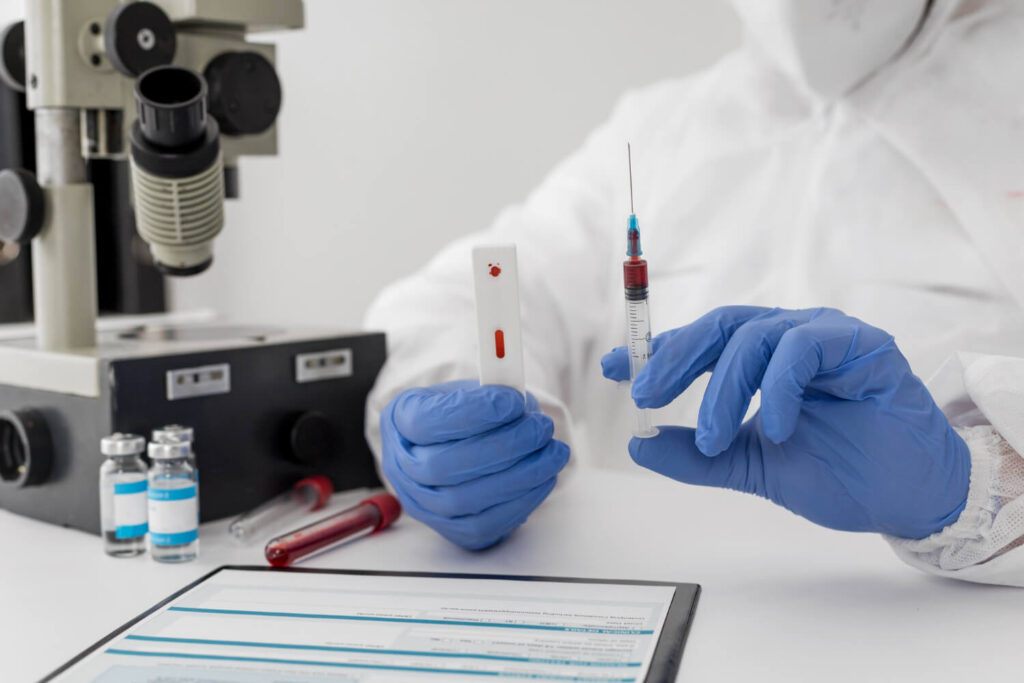
After receiving initial positive HIV test results, it is vital to undergo confirmatory tests. It is conducted to confirm the first test diagnosis. Confirmatory tests are highly reliable and help reduce the possibility of false-positive results, as they specifically target HIV antibodies or genetic material associated with the virus. These tests are essential to eliminate any doubt and provide an accurate diagnosis.
Importance of Undergoing Confirmatory HIV Test
There are several reasons why an individual must undergo confirmatory HIV tests. For instance, the conducted HIV screening test may involve false positive and false negative HIV results. Such a scenario calls for another test, which is a confirmatory HIV test. It can be conducted with the help of a doctor.
Furthermore, seeking confirmatory HIV tests brings a clearer view of the current HIV status of the patient. It allows them to take the next step, which is undergoing treatment options recommended by the doctor.
Meanwhile, in the global threat context, seeking confirmatory tests is a vital step to help update the current data about HIV occurrence. According to the World Health Organization, 42.3 million people around the world have been diagnosed with HIV. However, there’s still a chance that more people have this condition and have not yet been diagnosed. That’s why a confirmatory test is vital to determine the current number of patients.
In short, a confirmatory test is an important next step that individuals must not take for granted. It does not only benefit them as it also works as a global security. So, it’s best to seek immediate help after getting the HIV test results from the self-test kits.
Next Steps After Positive HIV Test Results
Medical Care and Treatment Options
After the confirmatory test, patients with HIV can expect a treatment plan provided by the health care professional. This treatment plan commonly involves effective options like antiretroviral therapy (ART), and other HIV/AIDS management tips.
The antiretroviral therapy (ART) options will help control the virus, manage symptoms, and prevent its transmission to others. At the same time, regular medical check-ups and adherence to prescribed treatments are vital to living a healthy and fulfilling life with HIV.
Emotional Support and Coping Mechanisms
When dealing with HIV, it is also important to check the emotional impact it brings. Living with HIV brings the fear of receiving a positive diagnosis and the fear of stigma surrounding the topic. Patients may feel overwhelmed, scared, or unsure about the future. Some may feel the need for isolation due to the burden of being an HIV-positive patient.
HIV is one of the most difficult conditions to face alone. That’s why seeking emotional support from friends, family, or support groups can help. Additionally, seeking counseling services and mental health professionals who specialize in HIV/AIDS can provide the necessary guidance and coping mechanisms needed to navigate the emotional challenges that may arise.
In that case, patients must remember that medical care and emotional support are vital for managing HIV. With these treatment options, every individual with the virus can have a chance to lessen the burden of the condition. Thus, leading them to successfully live a better life ahead.
Frequently Asked Questions
How does the window period affect HIV test results?
The window period plays a significant role in the accuracy of HIV test results. It is crucial to know the window period associated with the type of test chosen to determine the appropriate time for testing after potential exposure. Testing too early during the window period may yield false-negative results while testing too late could provide misleading outcomes. Understanding the window period of the specific HIV test helps ensure accurate and reliable results.
Can individuals receive instant HIV test results?
Yes, self-test HIV kits are created to yield instant HIV results for the patients. Rapid test kits commonly provide HIV test results in 15 minutes. Patients can use oral fluids or blood samples to accomplish the test and determine the presence of antibodies. Take note that this instant test result must still be verified through a confirmatory test. Thus, ensuring the HIV diagnosis is accurate and moving to the next step.
When do HIV test results change?
HIV test results can change based on various factors such as the stage of infection, testing methods used, and timing of testing. For example, initial tests may show negative results during the window period but turn positive later as antibodies develop. It’s essential to follow up with healthcare providers for regular testing. Early detection and prompt treatment are key to managing HIV effectively.
Conclusion
Interpreting HIV test results can be a complex process that requires a comprehensive understanding of various factors. However, harnessing this knowledge allows people to take over their health as they manage to determine their current HIV status. That’s why, if there are individuals located in areas where risk factors of HIV are prevalent, it’s time to navigate their health through HIV test results.
Early detection is a key component to combat HIV/AIDS. Book an online consultation with an infectious disease doctor and embrace the chance to empower one’s health against HIV.
